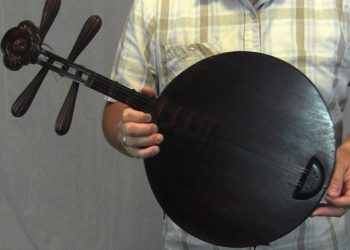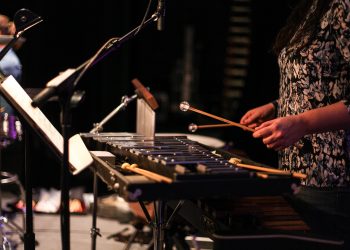When it comes to musical instruments, many people might think of familiar names like guitar, piano, or drums. However, there are countless other instruments that exist, with each offering its unique sound, history, and cultural significance. In this article, we will explore the top 11 musical instruments that start with the letter Z. While the letter Z may not be the most common starting letter for musical instrument names, there are still plenty of instruments that fall under this category, ranging from traditional African percussion to modern electronic instruments. Some of these instruments you may have heard of, while others may be entirely new to you. Regardless, this article aims to provide a comprehensive overview of the fascinating world of musical instruments that start with the letter Z. Whether you are a musician, a music enthusiast, or someone looking to expand your knowledge of different cultures and sounds, this article will offer valuable insights and information about the unique instruments that start with the letter Z. So, let’s dive in and explore the world of musical instruments that start with Z!
1. Zambomba
Building upon the timeless sound of its predecessors, the zambomba is a captivating musical instrument that has been gaining popularity in recent years. This ancient drum-like contraption features two wooden shells connected by a head, and produces a unique rhythmic noise when struck with mallets or sticks. What makes it so special is its ability to deliver both loud, bold beats as well as delicate, subtle tones – giving musicians plenty of creative freedom as they explore different sounds and melodies.
Unlike other percussion instruments such as drumsets or xylophones, the size of the zambomba makes it incredibly portable; perfect for taking on stage or throwing into your suitcase before you hit the road. It’s also easy to play, requiring only minimal practice time each day before you can begin to produce beautiful music.
Another great thing about this instrument is its versatility. Not limited to any one genre of music, the zambomba offers players countless opportunities to experiment with their craft and create something truly original. Whether it be jazz, reggae or anything else in between – no matter what type of sound you’re going for, there’s sure to be a way to make use of this extraordinary instrument!
In short: if you’re looking for an exciting new addition to your repertoire of musical instruments then look no further than the zambomba. Easy-to-use yet capable of producing stunning results – this remarkable device provides endless possibilities for creativity and expression through sound!
2. Zampogna
The zampogna is another captivating musical instrument that has been around for centuries. Boasting an array of pipes and reeds, this unique contraption produces a distinctively beautiful sound when played. It’s believed to have originated in the south of Italy where it was traditionally used as folk music during Christmas celebrations.
Today, however, the zampogna can be found all over the world – from jazz halls to symphony orchestras. Its distinctive notes and tones provide players with ample opportunity to experiment with their craft and create something truly special. This makes the zampogna ideal for those looking to explore different genres of music or add more depth to existing compositions.
What sets this instrument apart from others is its ability to produce both loud and soft sounds simultaneously; giving musicians plenty of room for creativity when playing live shows or recording songs. Additionally, unlike many other percussion instruments – it’s incredibly portable thanks to its smaller size. This means you can easily take your zampogna anywhere you go!
From traditional Italian folk tunes to modern-day pop tracks – there’s no limit to what kind of soundscapes you can create with this remarkable instrument. So why not give the zampogna a try today? With its versatility and easy portability, you’ll see just how quickly it’ll become an essential part of your creative process!
3. Zampoña
The zampoña is a type of panpipe native to South America. Unlike its Italian counterpart, the zampoña features several pipes of varying lengths that are played individually or together in order to produce an array of pitches. This allows for more melodic expression than with just one pipe and helps create a fuller sound. Since it’s much smaller than other wind instruments, it can be easily transported from place to place – making it great for performances both indoors and outdoors.
What makes this instrument so appealing is its ability to play fast passages and intricate rhythms as well as gentle melodies. Its versatile range means you can use it for all kinds of music, from folk songs to Latin-inspired beats! Plus, due to its small size and light weight, even those who don’t have access to larger wind instruments can still experience the joys of playing this unique instrument.
In addition to being fun, the zampoña also has many practical applications such as providing accompaniment during ceremonies or traditional dances. It’s easy enough for anyone regardless of skill level to pick up and begin learning how to play immediately — no prior musical knowledge needed! Whether used in festive gatherings or simply enjoyed on your own time, you’ll quickly find yourself captivated by the mesmerizing sounds made possible by the zampoña.
From subtle plucking notes to lively tunes – explore new possibilities with this incredible instrument today! With practice and patience, you’ll soon discover why this beloved instrument continues to capture hearts around the world.
4. Zanfona
The zanfona is another traditional South American instrument with a unique sound. It’s a type of stringed instrument that uses two sets of strings – one set providing the melody and the other providing harmony. This creates an especially rich and layered tone that can be used to create beautiful music!
Like many instruments, the zanfona requires some skill in order to play it well. However, this doesn’t mean it has to be difficult or intimidating – even beginners can start making pleasant sounds right away. With practice, players will soon discover how to combine chords into melodies and add rhythmic complexity through dynamic techniques like strumming and plucking.
Although its origins are unknown, the zanfona has been around for centuries as part of various Latin cultures’ musical traditions. Its versatility makes it ideal for playing all kinds of genres including folk songs, spirituals, waltzes, tangos and more! And since each performance begins with just two simple notes, everyone from aspiring musicians to experienced performers can enjoy exploring its possibilities.
From tranquil tunes to lively rhythms — let yourself get lost in the beauty of what this special instrument has to offer! The range of emotions you’ll experience while learning how to make music on the zanfona is truly unforgettable.
5. ŻAqq
The Żaqq is a wind instrument from the Maltese Islands, and has been around for hundreds of years. It’s made up of two pipes – one is used to blow into and the other as an outlet for sound. The instrument produces a unique tone that can range from soft and gentle to loud and piercing.
Unlike many instruments, playing the Żaqq requires not only skill but also breath control. Players must learn how to properly hold their breath while blowing into the pipe in order to achieve the desired pitch or volume. This technique takes practice, but once mastered it allows performers to create beautiful melodies with ease!
In addition to its melodic capabilities, the Żaqq is also often used as part of traditional folk dances. Its rhythmic qualities make it perfect for accompanying lively tunes that get people on their feet! In fact, some groups even go so far as to integrate żaqqs into entire performances which combine music, dance, costumes and storytelling for a truly captivating experience.
No matter what style you’re looking to explore – whether it be classical compositions or jigs – learning how to play this special instrument will open up all kinds of new musical possibilities. So why not give it a try? You might just find yourself swept away by its enchanting sounds!
6. Zhaleika
Diving into the world of percussion instruments, one can’t help but be captivated by another traditional instrument – the zhaleika. This single-reed wind instrument is made from wood and has a distinctive sound that lends itself to fast and lively folk music. Its bright tones are often used for accompaniment or as part of an ensemble, though it’s also possible to find solo pieces written specifically for this instrument.
In terms of its playing style, the zhaleika requires both skill and patience. Musicians must master how to control their grip on the reed in order to create different dynamics while still keeping time with the rhythm. It takes practice to develop a signature sound, but once you have it down your performances will be sure to impress!
The zhaleika’s range makes it suitable for a variety of musical genres such as classical music, jazz, rock and even contemporary beats. Plus, learning how to play this enchanting instrument could open up new possibilities for creative expression – allowing performers to explore creative ideas beyond what they already know.
So why not give it a try? You never know where your journey with this remarkable instrument might take you!
7. Zheng
The zheng is an ancient Chinese instrument that dates back over two thousand years. It’s a stringed instrument made up of between 12 and 25 strings, which are plucked with the fingers or plectrum to create its mesmerizing sound.
Often referred to as a “guzheng” in China, it’s one of the most popular instruments used for traditional music performances. Its unique tuning allows players to explore various modal scales, giving them greater flexibility when creating their own melodies. In addition, some modern day musicians have even incorporated electronic effects into their playing style – adding another layer of complexity to the mix.
Playing the zheng requires skillful finger control and coordination. For beginners, there are many tutorials available online – from basic techniques to more advanced pieces – that can help you learn this beautiful instrument at your own pace. Once you’ve mastered the basics, why not try composing your own piece? You’ll be surprised by what musical ideas come out when you let yourself experiment with this captivating instrument!
From relaxing background tunes to high-energy solos, the possibilities of manipulating the sounds produced by this historic instrument are virtually limitless. So if you’re looking for something special yet challenging, then consider picking up a zheng today – and see where it takes your creative journey!
8. Zhuihu
The zhuihu is another stringed instrument native to China, one that has been gaining popularity among modern players. Unlike the zhongdihu which features additional strings and frets for increased flexibility of sound, the zhuihu features a curved neck and only four strings – two of them tuned in octaves. This makes it an ideal choice for those who want to venture into the world of traditional Chinese music without being overwhelmed by too much complexity.
The zhuihu produces a mellow yet hauntingly beautiful tone due to its unique construction and tuning system. It’s small size also allows you more freedom to experiment with different playing styles such as plucking or strumming, making it easy to create intricate melodies and rhythms. And thanks to its simple design, even beginners can pick up this instrument quickly!
If you’re looking for something truly special, why not try attaching some effects pedals? These will add texture and depth to your performance – giving it an edge that never fails to captivate audiences! You could also explore alternative tunings like D-A-D-G or G-B-C#-Eb if you want something really adventurous. With practice, dedication and creativity, you’ll soon be crafting pieces that are both spectacular and moving.
This magical little instrument offers endless possibilities – so don’t let yourself get stuck inside musical boxes; break out and discover what wonders await when you put your heart into playing the zhuihu!
9. Zither
Having explored the zhuihu, let’s take a look at another exciting instrument – the zither. This versatile stringed instrument has been around for centuries and is played in many different cultures all over the world. It consists of several strings stretched across a flat soundboard, allowing you to play multiple notes simultaneously by plucking or strumming them together with your fingers or a pick.
The zither produces an ethereal yet powerful tone that can be used to create amazing harmonies and melodic lines. With some practice, you’ll soon be able to control its complex timbre and weave intricate stories through intricate melodies and rhythms. You could even experiment with adding effects pedals such as reverbs and delays for added texture!
You don’t have to stick to traditional styles either; there are countless ways to explore this magical instrument’s potential. Whether it’s playing along with other instruments like drums or bass guitar, creating ambient soundscapes or crafting intricate compositions – the possibilities are nearly endless when it comes to exploring what this incredible instrument has to offer.
From classical symphonies to modern pop songs – whatever genre you’re interested in pursuing, learning how to play the zither will open up avenues of musical exploration like never before! So why not give it a try? With dedication and creativity, you’ll soon find yourself unlocking new horizons of music-making!
10. Zuffolo
The zuffolo is another unique stringed instrument that has been around for centuries. Like the zonghu, it consists of four strings stretched across a soundboard, but its neck is shorter and more curved than the former. This gives it a distinctively sweet tone which makes it perfect for folk music and light jazz standards alike.
However, what really sets this instrument apart from other stringed instruments is its flexibility when it comes to playing techniques. For example, due to its size you can use both hands to pluck or strum; while with traditional guitar-style picking you’d have to alternate between your fretting and picking hand. You can also use advanced vibrato techniques on the zuffolo such as bending notes or ‘hammering on’ and ‘pulling off’ – giving you plenty of options with regards to how you want to express yourself musically!
Playing the zuffolo isn’t just about creating beautiful melodies though – there’s an almost endless number of ways in which you can combine different rhythms and textures together too! Whether you prefer fast fingerpicking patterns or intricate arpeggios full of percussive flourishes – why not explore all these possibilities and see where they take you?
Ultimately, learning any musical instrument requires patience and dedication; yet if you put in the time and practice hard enough, then eventually you’ll be able to craft something truly special with this charming little instrument. Who knows what wonders await those who dare venture into uncharted musical waters?
11. Zurna
Zurna is an ancient wind instrument that has been used in traditional music for centuries. It is a double-reed woodwind, similar to the oboe or clarinet, but with a much deeper sound. The zurna was traditionally played at weddings and other festive occasions as part of folk music ensembles, often alongside drums and string instruments like violins or lutes.
Playing the zurna requires some skill, as it involves controlling two reeds at once while blowing into them with enough breath pressure to create a full tone. To produce different notes on the instrument, players use their fingers to close off holes on either end of the pipe. This allows air from inside the tube to be forced out through one of the two reeds, creating sound waves which vibrate through the air around us.
The sound produced by a zurna is unique; its deep tones give it an earthy quality that can be quite haunting when heard in isolation. But when combined with other instruments such as drums and strings, it creates a powerful backdrop for any kind of musical performance. Moreover, this combination of sounds lends itself well to improvisation – something that many experienced zurna players take advantage of during live performances!
From wedding ceremonies to funerals and all kinds of celebrations in between, you will find people playing the zurna throughout Turkey and beyond: it seems that this timeless instrument continues to bring joy wherever it goes!









